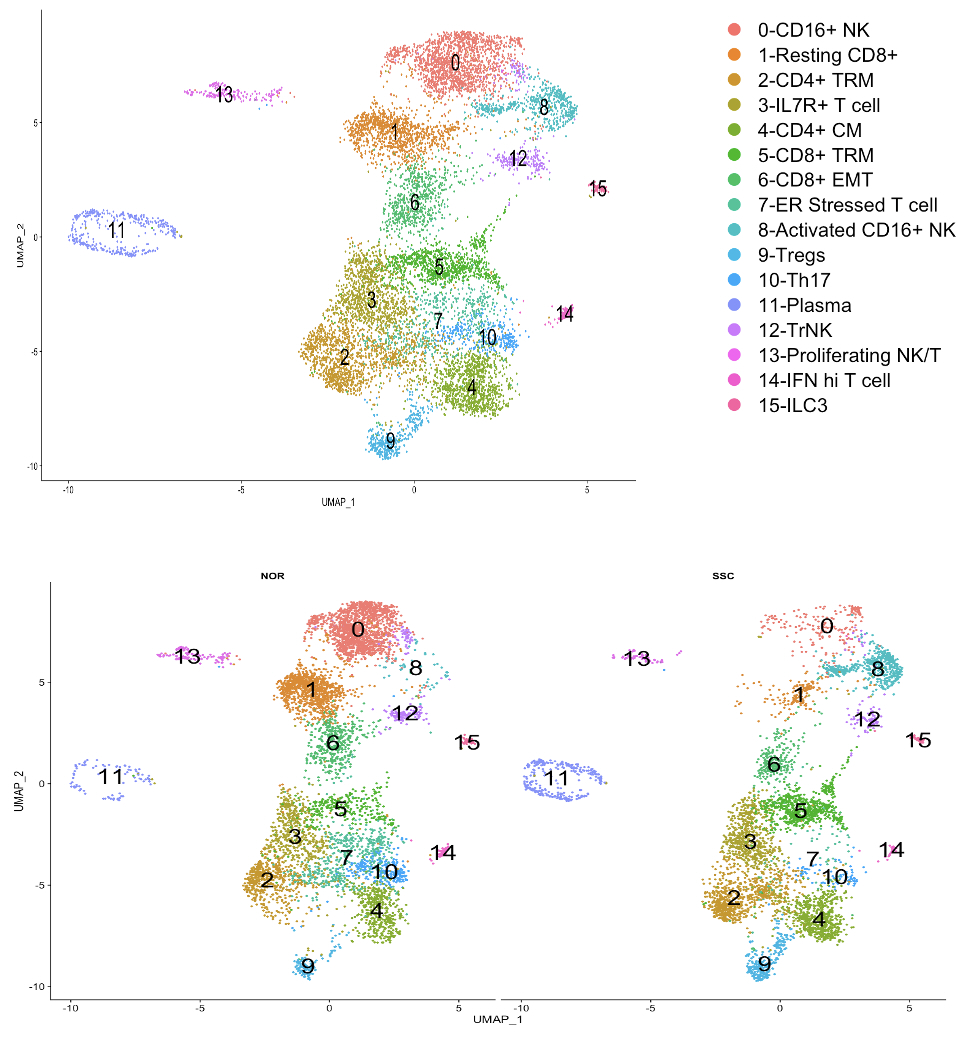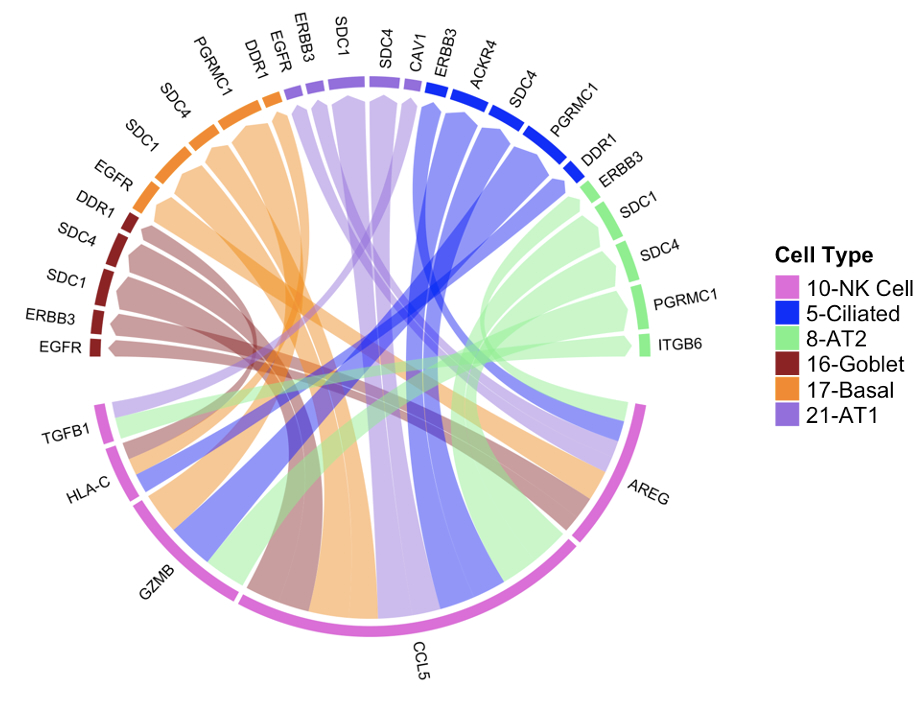Session Information
Date: Sunday, November 17, 2024
Title: Systemic Sclerosis & Related Disorders – Basic Science Poster I
Session Type: Poster Session B
Session Time: 10:30AM-12:30PM
Background/Purpose: Scleroderma-associated interstitial lung disease (SSc-ILD) is the leading cause of death among SSc patients. Loss of alveolar epithelial cells (AEC) and bronchial cell hyperplasia, i.e., bronchiolization, are principal pathological features of the disease. While inflammation is known to be another primary disease feature, little is known about the potential role of lung lymphoid populations and particularly, natural killer (NK) cells on bronchiolization. What is known about NK cells in SSc comes from peripheral blood and bronchoalveolar lavage fluid and has not provided a consistent vision of their role in SSc. Using single cell RNA-sequencing (scRNA-seq), we have identified an activated, cytotoxic NK cell population in SSc lung tissue.
Methods: Lung tissues from 13 SSc-ILD and 6 healthy control (HC) lungs collected were processed and analyzed by 3’ 10X single cell RNA chemistry. Samples were normalized and batch-corrected before unsupervised UMAP clustering and subclustered further into specific lymphoid subpopulations. Differentially expressed genes were derived to identify lymphoid subclusters. Connectome, a program that analyzes ligand-receptor interactions within and between cell types in lung tissue, was utilized. Immunohistochemistry stains for CD56 and granzyme B (GZMB) in lung tissues were completed.
Results: 16 lymphocyte clusters in both SSc-ILD and HC, including three populations of NK cells, several populations of T cells, a proliferating population of lymphoid cells, and a cluster of interferon-activated T cells were identified. We observed striking shifts in lymphoid cell populations in SSc-ILD lungs. SSc-ILD lungs showed a shift in CD56dim CD16+ NK cells toward an activated phenotype with strong upregulation of GZMB, CD226, interferon-gamma (IFN-γ), and its associated genes. Amphiregulin (AREG), a growth factor ligand, that binds epidermal growth factor receptor (EGFR), was shown for the first time to be highly upregulated in the SSc-ILD NK cells, demonstrating high-yield interaction with EGFR on basal and goblet cells via Connectome. Higher proportions of CD8+ T cells and regulatory T cells were also observed in SSc-ILD lungs.
Conclusion: SSc-ILD lungs are infiltrated by active, cytotoxic CD56dim CD16+ NK cells, showing increased expression of IFN-γ, GZMB, and AREG. These activated NK cells might kill AEC, contributing to the observed loss of these cells. The highly upregulated expression of AREG suggests that these cells might also contribute to bronchial epithelial cell hyperplasia as well as fibroblast activation via the AREG-EGFR pathway. Ongoing studies will clarify the pathological role of these cells in the bronchiolization and formation of honeycomb cysts in SSc-ILD.
To cite this abstract in AMA style:
Padilla C, Valenzi E, Tabib T, Nazari B, Fuschiotti P, Lafyatis R. Single Cell RNA-seq of Scleroderma-associated Interstitial Lung Disease Lung Explants Reveals an Active, Cytotoxic Natural Killer Cell Population [abstract]. Arthritis Rheumatol. 2024; 76 (suppl 9). https://acrabstracts.org/abstract/single-cell-rna-seq-of-scleroderma-associated-interstitial-lung-disease-lung-explants-reveals-an-active-cytotoxic-natural-killer-cell-population/. Accessed .« Back to ACR Convergence 2024
ACR Meeting Abstracts - https://acrabstracts.org/abstract/single-cell-rna-seq-of-scleroderma-associated-interstitial-lung-disease-lung-explants-reveals-an-active-cytotoxic-natural-killer-cell-population/


